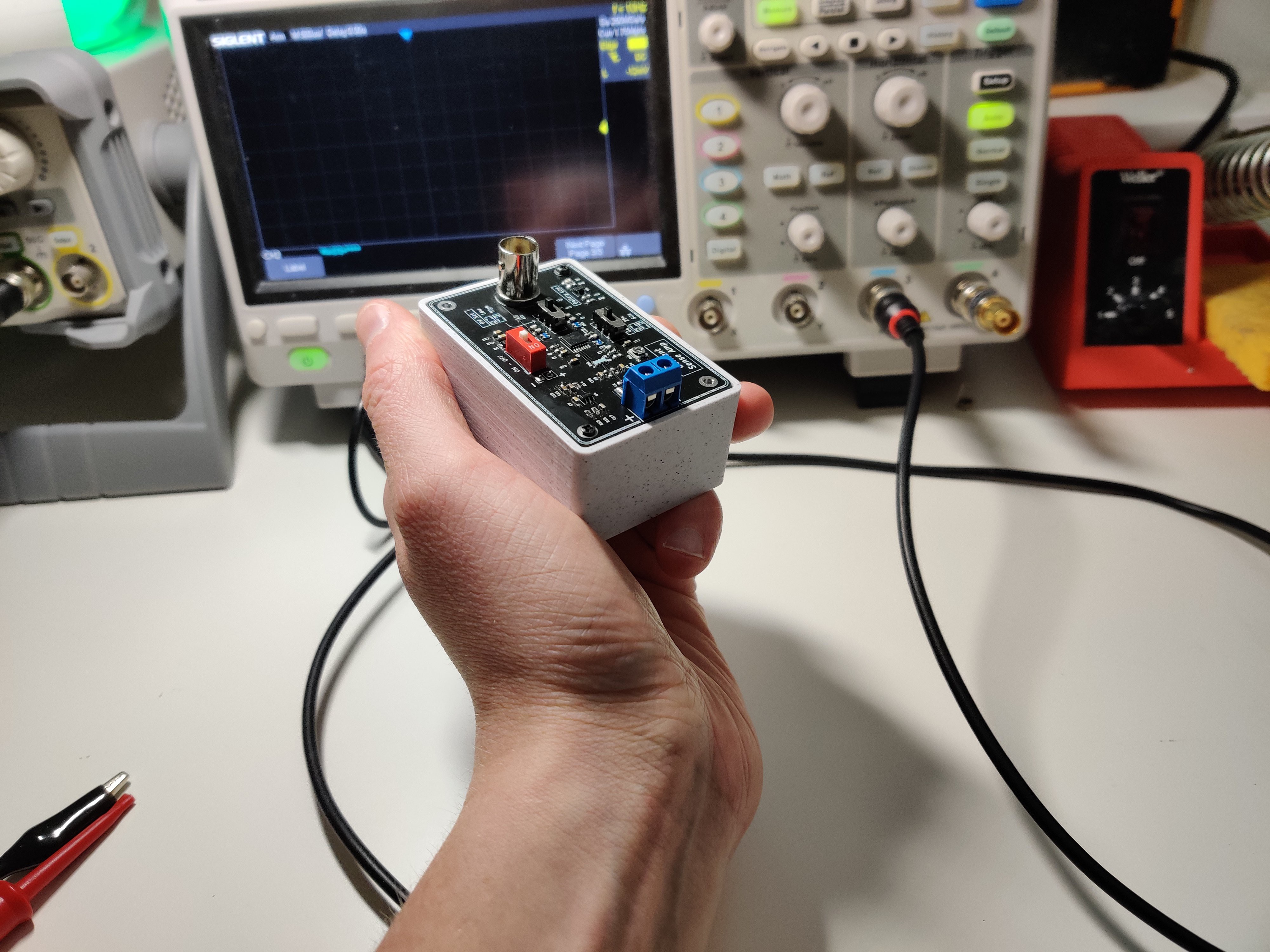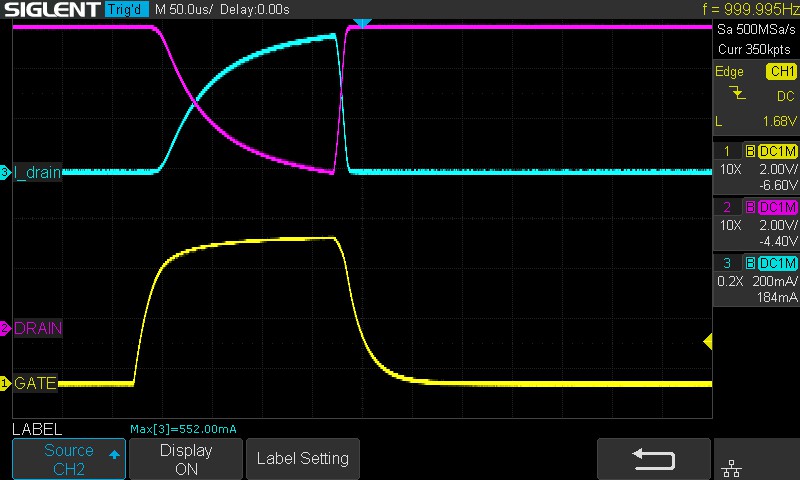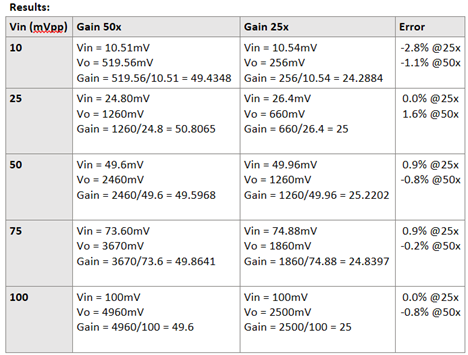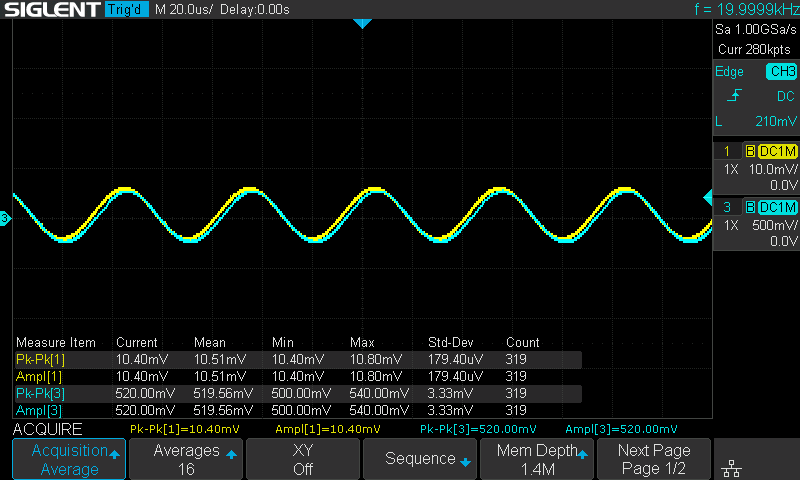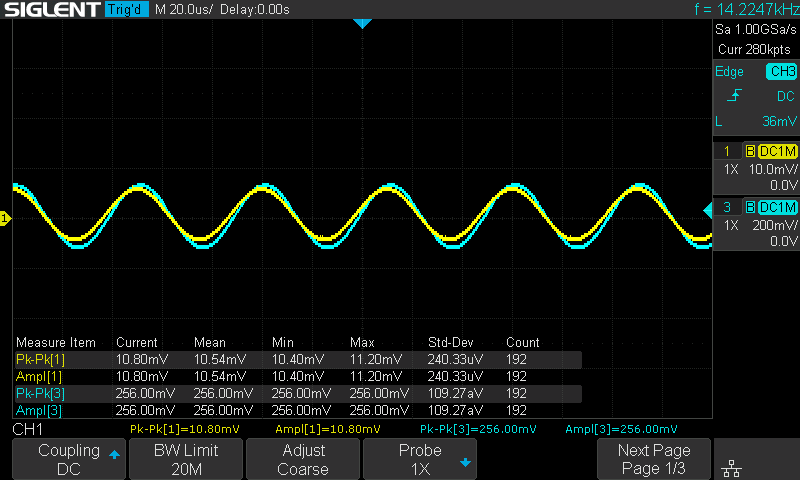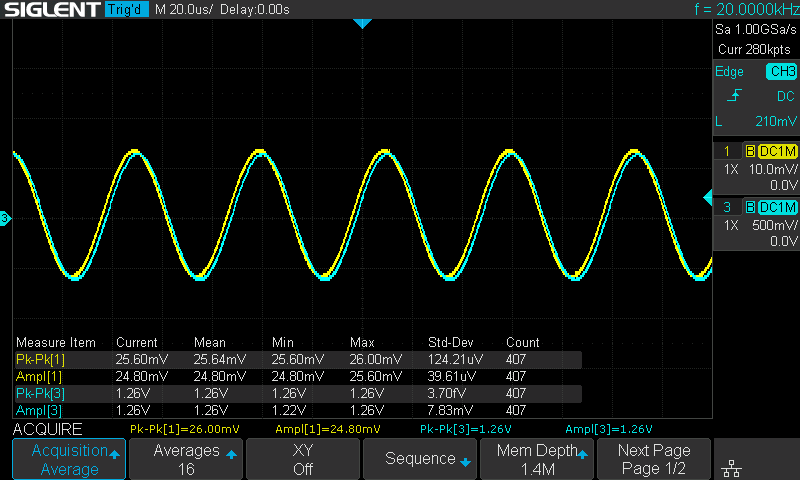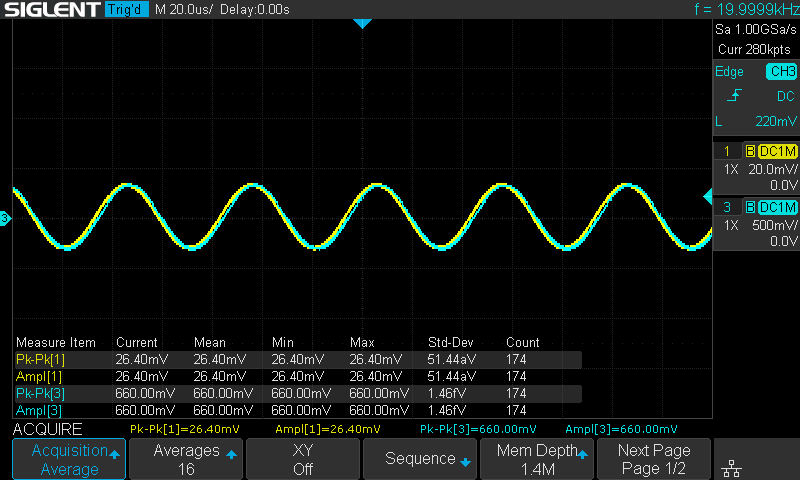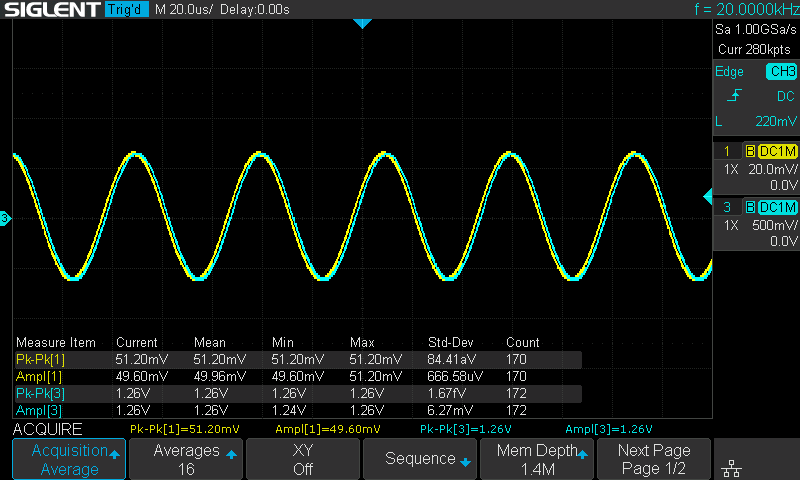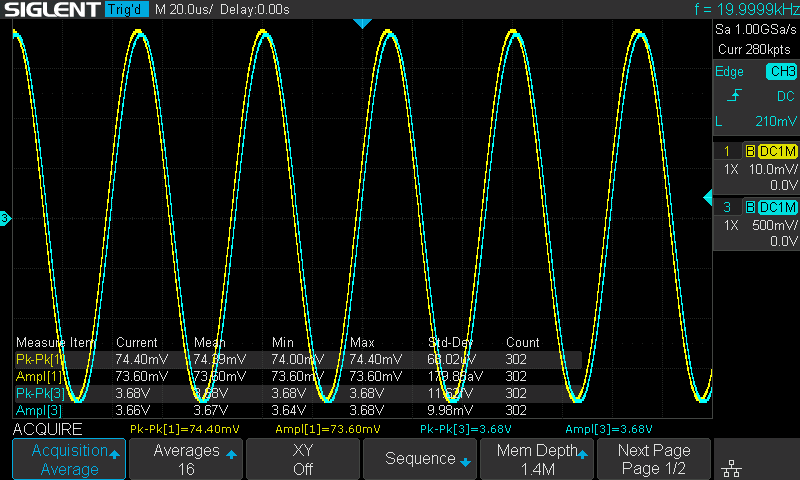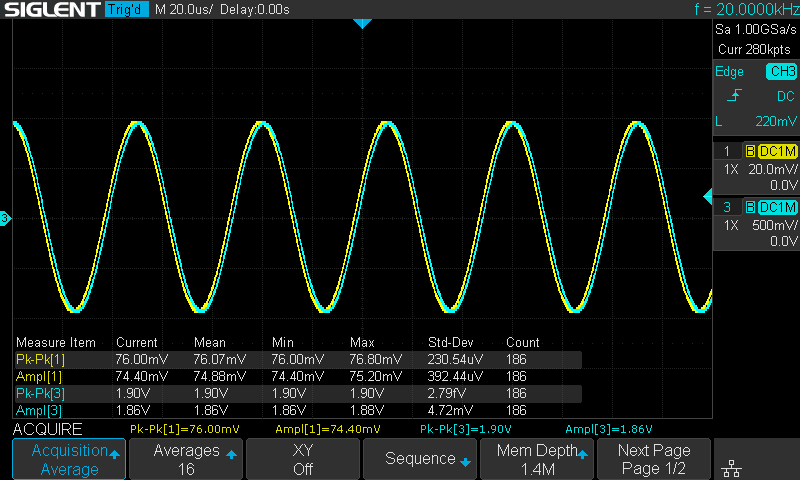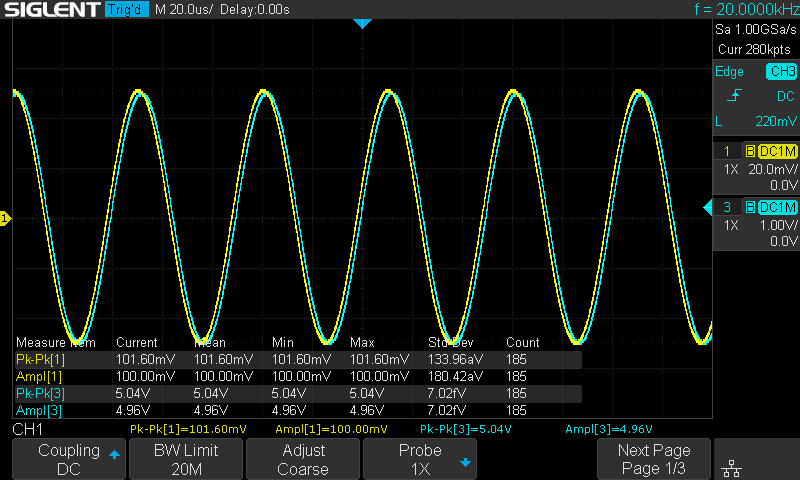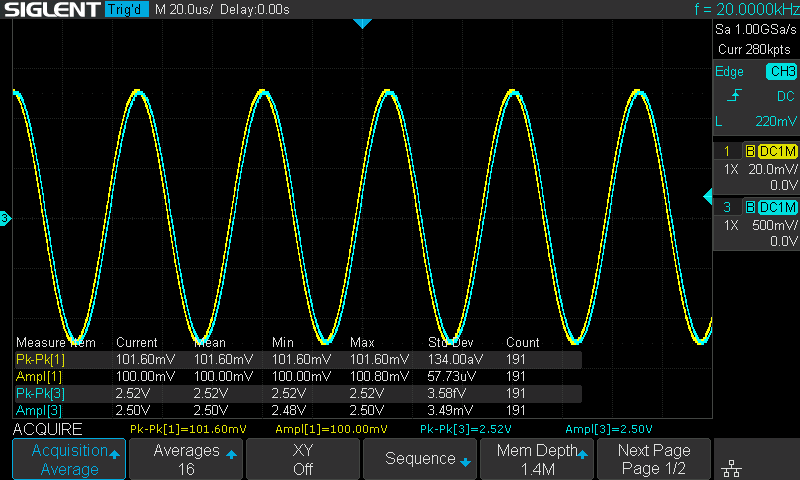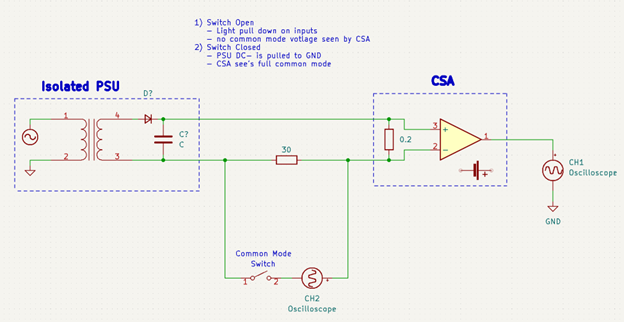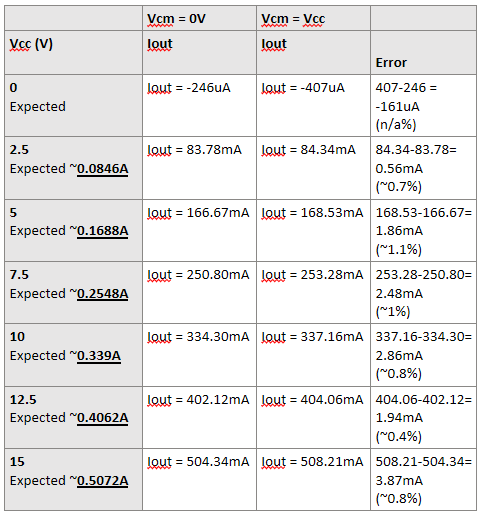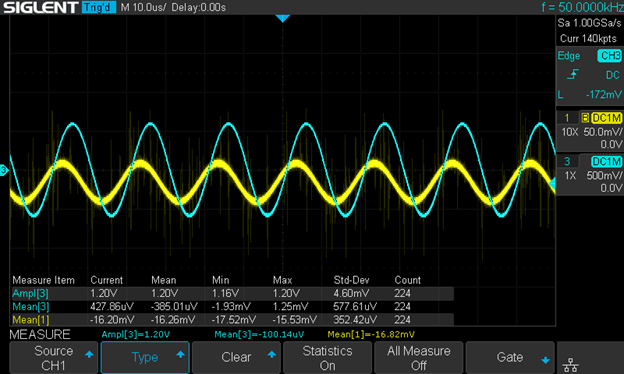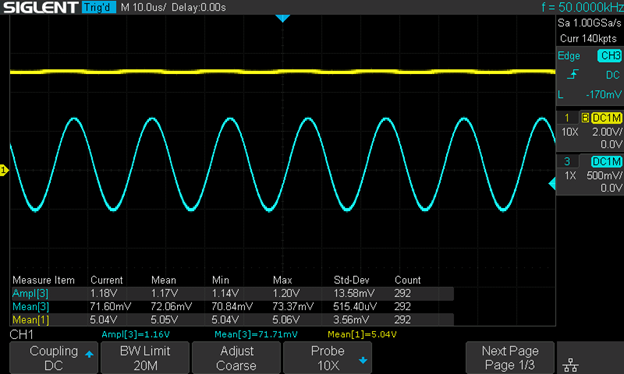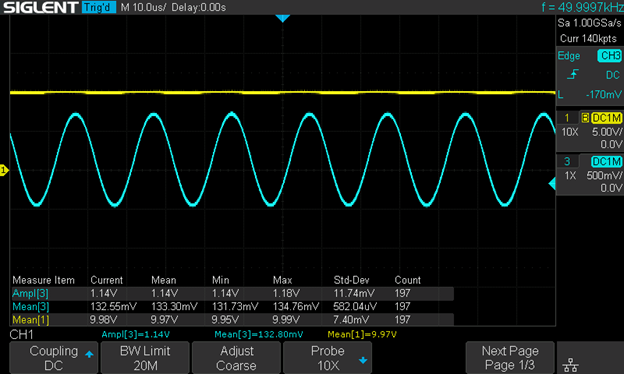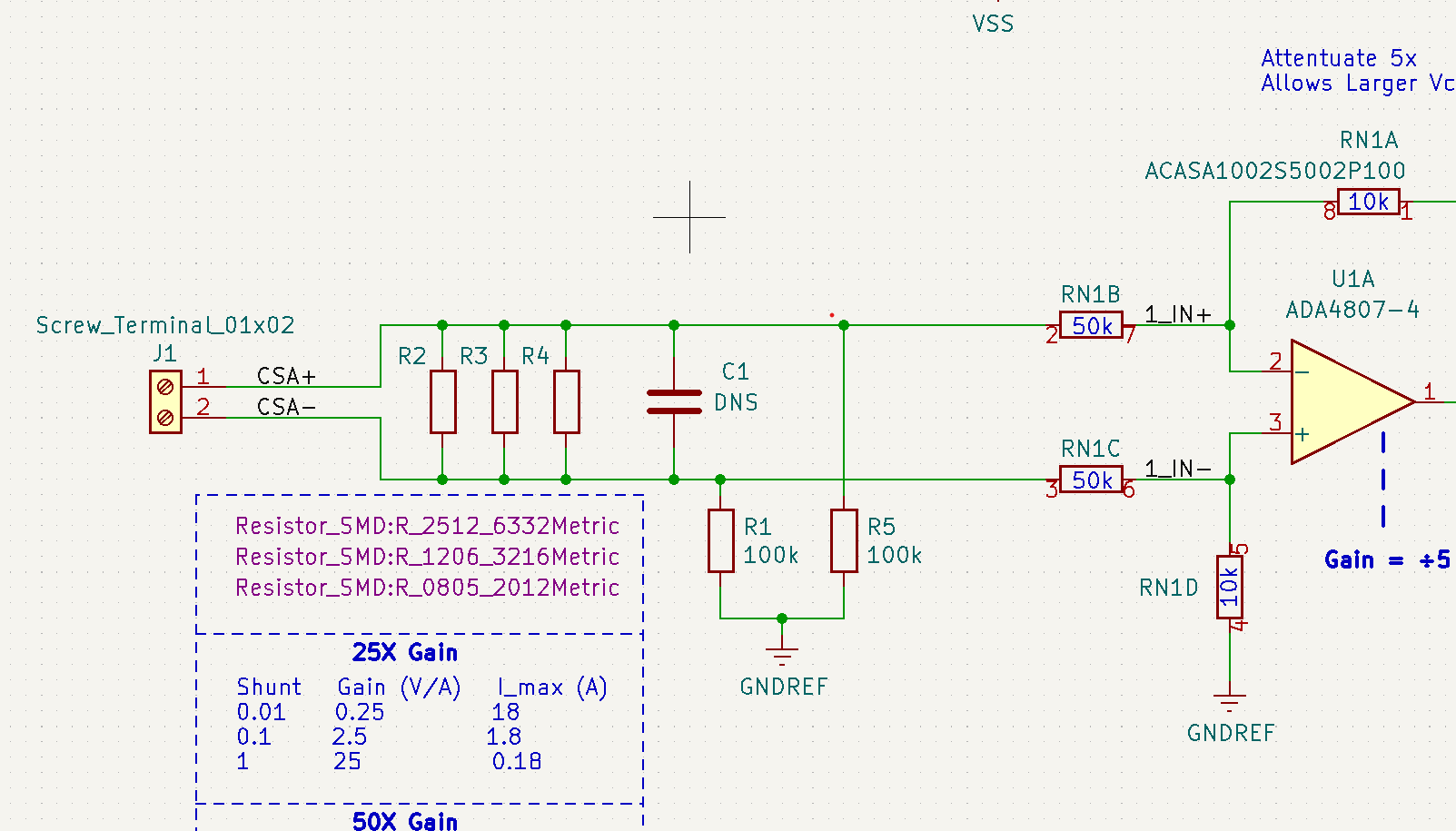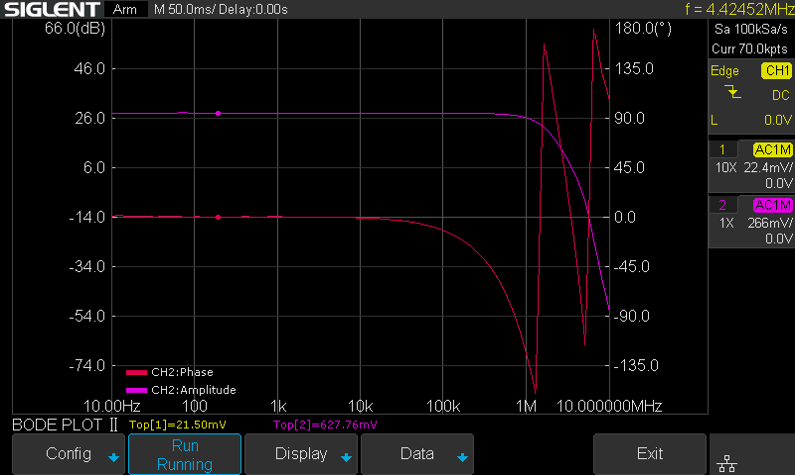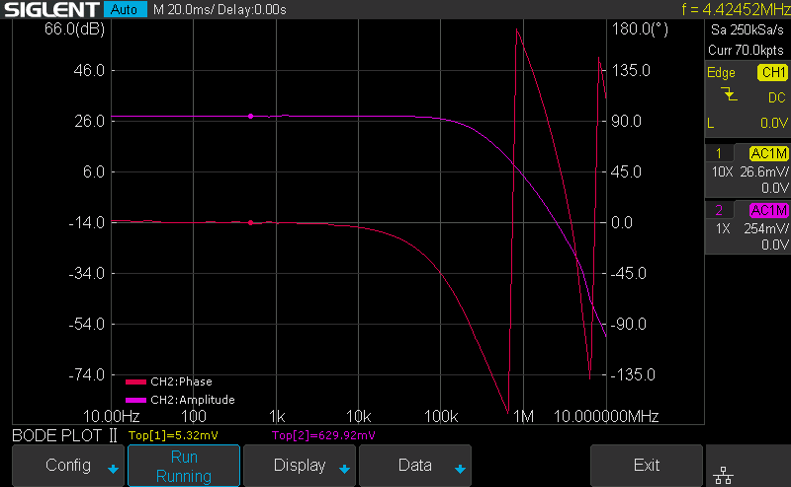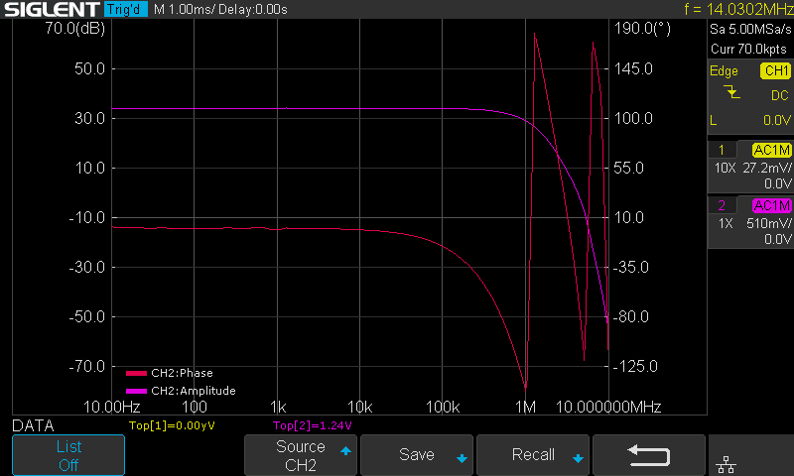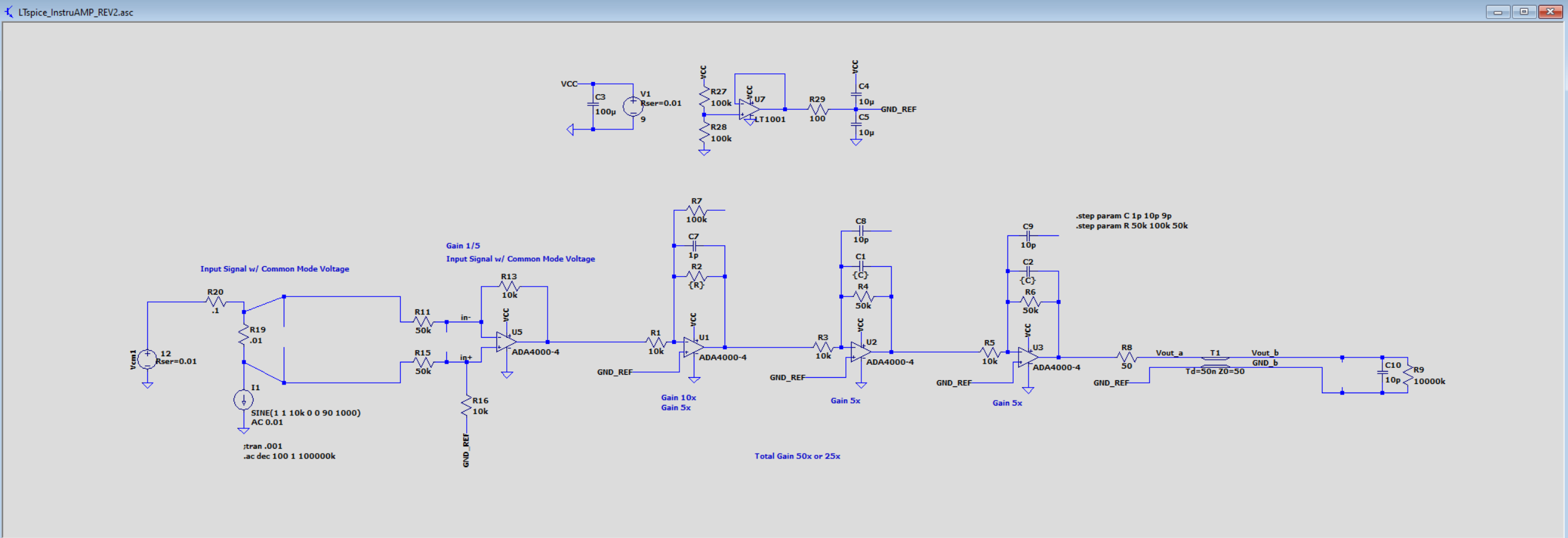-
Conclusion
06/17/2023 at 23:41 • 0 commentsBased on my testing I’ve designed about a 1-2% accurate CSA. Not the accuracy I was shooting for, but its good enough for a quick sanity check and general debugging. The widget is able to manage common mode voltages tested up to 15Vdc, and has a bandwidth of about 100-500kHz. Again, this is enough for most hobbyist circuits. I also designed a quick enclosure for the CSA in fusion 360 that will be pushed to the project files shortly.
![]()
![]()
Future Recommendations…
In my eyes, the disappointing spec for this design was the bandwidth. Due to component availability, I was forced to go with network resistors 10x higher impedance than what I wanted; (10k/50k) when I was hoping for (1k/5k). The higher impedance allows parasitic capacitance - for example at the inputs of the opamp - to more readily affect the overall bandwidth of the design. The MC33272A has 3pF typical input capacitance…. ☹
(++ Reminder to future me, make the BNC connector R/A, and maybe switch to MMCX)
CSA In Action….
Here’s the thing in action. I’ve tossed together a low-side switch with an NMOS from my parts bin. CH1 is the gate voltage (Vgs) coming from my function generator, CH2 is the drain voltage (Vds), and CH3 is the current going through the drain (Idrain). Current goes through the CSA (0.2ohm) -> 10ohm Resistor -> NMOS Drain.
![]()
![]()
Why do I think this cool?
How could we get a similar capture without the CSA…
Use isolated scope – but these are pretty rare, and I personally don’t have one.
Use a differential probe – but these cost a pretty penny (that's what the CSA fundamentally is)
Use the scopes MATH – but this would take up 2 channels, and it slows down my scope
Just accept 1 waveform – that’s no fun…
-
Testing – Gain Accuracy
06/11/2023 at 22:00 • 0 commentsIn my previous post I found that the DC common mode rejection adds less than a percent or so of error to the output. Next, I’ll see how the overall gain accuracy looks. I’m using a 20kHz input signal, and testing the output at 50x and 25x gain configs.
Measurements were collected at the input and output of the CSA. I had some averaging setup to help cleanup both waveforms. At lower input voltages the accuracy starts degrading, but above 25mVpp, the CSA gain is consistently within ±1% of expected. See data below.
![]()
And because I have them, I might as well share some of the captures too.
Vin (mVpp)
Gain 50x
Gain 25x
10
Expected ~
![]()
Vin = 10.51mV
Vo = 519.56mV
Gain = 519.56/10.51 = 49.4348
![]()
Vin = 10.54mV
Vo = 256mV
Gain = 256/10.54 = 24.2884
25
Expected ~
![]()
Vin = 24.80mV
Vo = 1260mV
Gain = 1260/24.8 = 50.8065
![]()
Vin = 26.4mV
Vo = 660mV
Gain = 660/26.4 = 25
50
Expected ~
![]()
Vin = 49.6mV
Vo = 2460mV
Gain = 2460/49.6 = 49.5968
![]()
Vin = 49.96mV
Vo = 1260mV
Gain = 1260/49.96 = 25.2202
75
Expected ~
![]()
Vin = 73.60mV
Vo = 3670mV
Gain = 3670/73.6 = 49.8641
![]()
Vin = 74.88mV
Vo = 1860mV
Gain = 1860/74.88 = 24.8397
100
![]()
Vin = 100mV
Vo = 4960mV
Gain = 4960/100 = 49.6
![]()
Vin = 100mV
Vo = 2500mV
Gain = 2500/100 = 25
-
Testing – DC Common Mode Rejection (Test #2)
06/10/2023 at 21:35 • 0 commentsAs mentioned in my earlier log, the last rejection test was a bit flawed. Here’s my second attempt. Unlike before there won’t be any AC signal injected on top the common mode, just a DC offset. This offset is supplied by an isolated lab bench PSU. See my test setup below.
![]()
In this circuit the “Common Mode Switch” is what enables the common mode voltage. While this switch is open, a light pull-down in the CSA should essentially remove all common mode voltage. When the switch is closed (which I will do by clipping CH2 GND to DC-), the CSA will see the full common mode voltage riding on top of the 30ohm resistor. Here’s my actual setup….
![]()
None of my tools are particularly precise/accuracy so it’s somewhat the blind leading the blind when it comes to these results. Nevertheless, these results are valuable in a comparison to one another... Note that I calculated the expected current using the CH2 mean divided by the measured resistance of the 30 ohm load (29.2ohm).
![]()
Ok so the error added by common mode voltage is less than ~1%, at approximately 286uA/Vcm. I’d call that a success.
-
Testing – DC Common Mode Rejection
06/06/2023 at 04:05 • 0 commentsA key aspect of this design was that it needed to reject atleast a 12V common mode signal. To achieve this, I attenuate both the common mode and differential signal at the first stage of my CSA (any other ideas??? I’d be interested to hear about them). This brought signal+Vcm to within the operating limits of my op-amp, but also substantially affects my S/N ☹. Anyhow, lets see how it turned out in practice with a few test points.
Note that I’m only looking at DC common mode here since this is what I’ll typically encounter. I’ll likely do a sweep of the AC rejection later.
Test signal is 50kHz, 50mVpp, AC coupled across the inputs of the CSA. The common mode voltage is provided by an external bench supply.
Vcm=0V, Vo_mean = -0.3mV
![]()
Vcm=5V, Vo_mean = 71.6mV
![]()
Vcm=10V, Vo_mean = 132.55mV
![]()
Well that was a bit disappointing, but I think my test setup is flawed. I added some series impedance to isolate my Vcm source, but this would have created a voltage divider at the R1 and R5 in my schematic. I’ll likely be doing some tweaking of both my circuit and test setup. (pretty sure I can DNP both R1 and R5 in this REV of my CSA)
![]()
-
Testing - Frequency Response
06/05/2023 at 01:00 • 0 commentsAfter some initial spark-up (pretty uneventful, magic smoke did not escape) I wanted to quickly take a look at the bandwidth. The following results were taken using OPA1664AIPWR as the main op-amp. Note that the spikie phase response is just the foldback from -180 to +180.
25x @High BWL
![]()
25x @Low BWL
![]()
50x @High BWL
![]()
50x @Low BWL![]()
-
Simulation
06/04/2023 at 20:28 • 0 commentsCompulsory LTspice simulation. Note that I’m not too concerned which op-amps are used in the sim… this is just to validate the overall design.
![]()
As expected, our simulated bandwidth is a lower than the -3dB point calculated using 1/(2*pi*R*C). This is mainly caused by the cascading of amplifiers. To adjust this, we would need to tweak the feedback capacitors… but since we are using relatively high gain-set resistors, this isn’t too easy. Ideally, I’d be using lower resistances, but these aren’t in stock. (Wanted to use low drift, high spec ACAS network resistors… can use 0402 parts in place though).
![]()
-
General Background
06/04/2023 at 19:40 • 0 commentsSingle chip CSA solutions exist, but all fall short in one aspect or another. Whether it be the low bandwidth of the INA27x series, limited configurability of hall-effect options, or just part availability.
The main goal of this design is to provide a simple circuit that will work with a wide range of IC’s on the market, and can be used (or adapted) for many different applications. To accomplish this, I first found what was the most common 4-channel op-amp package. Turns out 14-TSSOP (0.173", 4.40mm Width) is one of the most common packages for in stock op-amps. To support lower spec’d devices I included some options to compensate the total offset voltage, and to compensate the offset voltage caused by op-amp bias current.
For more information see the HAB document… I’ll be keeping these logs somewhat brief, and more testing focused.
"High" Bandwidth - Current Sense Amplifier
Configurable gain and bandwidth current sense amplifier. DC to 1MHz/100kHz bandwidth, at 25x/50x gain.
 Jesse Farrell
Jesse Farrell
